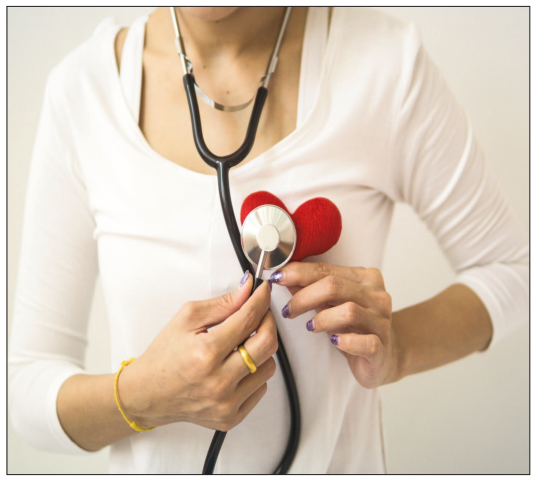A healthy lifestyle, especially when started at a young age, goes a long way to preventing heart disease and stroke. Individuals need to make their heart health a priority. Scheduling a visit with a healthcare provider for a preventive check-up, measuring blood pressure, checking cholesterol and signs of illness are vital components.
Photo by Puwadon Sangngern/Pexels
By Abdelrahman Aly, M.D.,
Mayo Foundation for Medical Education and Research
DEAR MAYO CLINIC: Each year at my physical, my health care professional tells me what my blood pressure, cho- lesterol and heart rate numbers are during the appointment. What do those numbers mean for my overall health?
ANSWER: Knowing and understanding key health numbers — blood pressure, cholesterol and heart rate, along with your family history –allow you and your health care team to determine your risk for devel-oping heart disease, stroke and peripheral artery disease. It is important to review this information every few months, or at least annually.
But what are these key heart health numbers?
First is blood pressure. This is a measure of how hard your blood pushes against your arteries as it moves through your body. High blood pressure occurs when the force of your blood against the walls of your blood vessels is consistently too high. Your blood pressure reading will fall into one of these four categories: Normal: Blood pressure readings of less than 120/80 millimeters of mercury, or mmHg.
Elevated: Readings consistently ranging from 120 to 129 systolic and less than 80 mmHg diastolic.
Hypertension stage 1: Readings ranging from 130 to 139 systolic or 80 to 89 mmHg diastolic.
Hypertension stage 2: Readings consistently ranging at 140/90 mmHg or higher. High blood pressure is harmful because it makes the heart work harder and less efficiently. You can have high blood pressure for years without experiencing any symptoms. Fortunately, high blood pressure easily can be detected. And once you know you have high blood pressure, you can work with your health care professional to control it.
The second important number you should know is your cholesterol. This waxy substance is found in all your cells and travels throughout your body in your blood.
Cholesterol comes from two sources: your liver and the foods you consume.
Cholesterol can join with other substances to form a thick, hard deposit on the inside of your arteries, making arteries less flexible. Sometimes these deposits can break suddenly and form a blockage that causes a heart attack or stroke.
When you have high cholesterol, you have too much low-density lipoprotein cholesterol, often called LDL or “bad cholesterol,” and not enough high-density lipoprotein cholesterol, or HDL or “good cholesterol.” There are no symptoms for high cholesterol.
Normal or healthy levels of cholesterol differ, depending on your age and sex:
People 19 and younger. LDL cholesterol is less than 110 milligrams and HDL is more than 45 milligrams.
Men 20 and older. LDL cholesterol is less than 100 milligrams and HDL is more than 40 milligrams.
Women 20 and older. LDL cholesterol is less than 100 milligrams and HDL is more than 50 milligrams. Your health care professional may recommend more frequent testing if initial results were abnormal, if you have a family history of early onset heart disease, or if you have a personal history of obesity or diabetes.
The third number to understand is your heart rate or pulse.
This is the number of times your heart beats per minute. Your resting heart rate is the heart pumping the lowest amount of blood you need because you’re not exercising. If you are sitting or lying down — and you’re calm, relaxed and aren’t ill — your heart rate is normally between 60 and 100 beats per minute.
Your target heart rate is the minimum heart rate to reach the level of energy necessary to give your heart a good workout. To find your target heart rate, the first step is determining your maximum heart rate.
Your maximum heart rate is 220 minus your age. Your target heart rate for moderate exercise is about 50% to 85% of your maximum heart rate.
Many wearable activity trackers can monitor your heart rate when you exercise and periodically throughout the day.
Finally, understanding your family’s heart and overall health history is key to understanding your overall risk of heart disease.
Outlining your family health history can help you and your health care professional understand if you have an increased risk for developing certain conditions that are present in your family. If you are at risk, you may be able to take preventive measures to decrease your risk or undergo genetic testing to clarify your risk.
While you can’t change your genes, you can control some aspects of your environment, such as diet, physical activity level and tobacco use. That’s why it’s so important to live a healthy life, regardless of your personal and family health history.
Mayo Clinic Q & A is an educational resource and doesn’t replace regular medical care. E-mail a question to MayoClinicQ&A@mayo.edu. For more information, visit www.mayoclinic.org.




